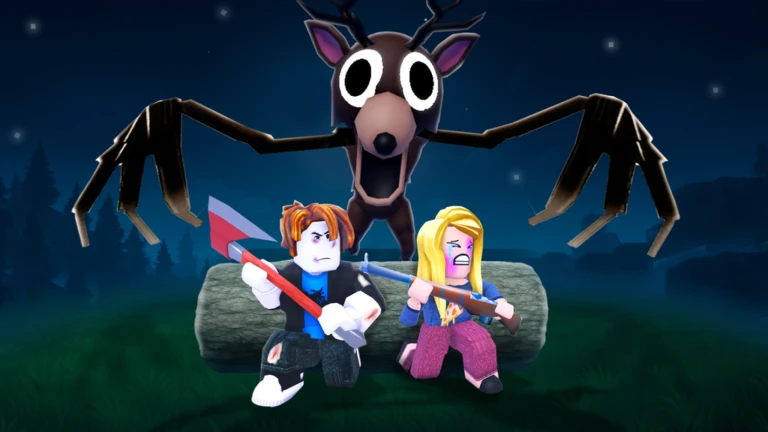🦉 99 Nights in the Forest 🔦 – A Roblox Game Development Case Study
- Primal Cam
- Aug 10
- 3 min read

Introduction | 99 Nights in the Forest
"99 Nights in the Forest" is an immersive Roblox survival-horror experience set in a mysterious, ever-changing woodland.
The game challenges players to endure 99 nights, each progressively more dangerous, with limited resources and unpredictable threats. This case study examines the design, development, and optimization process that brought the project from concept to reality.
Our goal with this case study is to break down:
The core gameplay loop that keeps players returning.
Technical challenges and how we solved them.
Monetization strategies without compromising immersion.
Player psychology behind survival horror retention.
Lessons for other Roblox developers.
1. Concept & Inspiration
The idea stemmed from the developer’s love for tension-driven survival games such as Don’t Starve, The Forest, and Phasmophobia. The vision was to blend Roblox's accessibility with deep immersion:
99 Nights = a definitive win condition for competitive players.
The Forest = a procedurally generated map with a consistent, eerie tone.
Survival-Horror Mechanics = balancing resource management, fear, and exploration.
2. Core Gameplay Loop
The heart of the game revolves around a simple but addictive loop:
Scavenge – Players search the forest for food, tools, and clues.
Defend – Nightfall brings hostile entities that attack the player’s camp.
Survive – Survive until morning and repair damage to continue.
Progress – Unlock better gear and reveal more of the forest’s mysteries.
This loop is supported by a day/night cycle with a 10-minute in-game day and 5-minute night. Each night ramps up difficulty.
3. Procedural Forest Generation
Instead of a static map, we used procedural terrain chunks to:
Keep replayability high.
Limit predictability of resource spawn points.
Increase tension as familiar routes disappear.
We leveraged Roblox’s Terrain:FillBlock for biome variation, combined with tree and rock clusters generated using a Perlin noise system.
4. AI Threat System
Enemies are the main source of tension. We created three distinct threat archetypes:
The Stalker – Follows players silently, attacks when cornered.
The Lurker – Avoids light, forcing players to manage flashlight batteries.
The Beast – Charges camps, testing defensive structures.
AI was handled server-side with pathfinding service, but certain decisions (e.g., hiding in shadows) were calculated client-side for responsiveness.
5. Lighting & Atmosphere
Atmosphere is everything:
Used Future Lighting with volumetric fog.
Added dynamic shadows from campfires and flashlights.
Synced ambient audio to the day/night cycle.
To keep performance smooth, light sources within 150 studs of the player were prioritized.
6. Resource & Inventory System
The inventory is grid-based (6x4 slots) and fully server-authenticated. Items include:
Food (decays over time).
Tools (axes, hammers, traps).
Clues (unlock story lore).
Data is saved using Roblox Data Stores with backups every 5 minutes to prevent progress loss.
7. Monetization Without Breaking Immersion
We implemented monetization carefully:
Cosmetic Camp Upgrades (tents, lantern skins).
Premium Tools that save time but don’t trivialize difficulty.
Double Resource Boost (timed boost for serious players).
No pay-to-win mechanics were added.
8. Multiplayer vs Singleplayer Design
The game supports 1–4 players per session. Balancing multiplayer was tricky:
Enemy spawns scale per player.
Resource scarcity scales downward with more players to maintain tension.
Solo play is harder but grants a small resource boost.
9. Technical Challenges
A. Terrain Streaming
Problem: Large map caused slow load times.Solution: Implemented chunk-based terrain streaming using StreamingEnabled.
B. AI Pathfinding in Dense Forests
Problem: Enemies stuck on trees.Solution: Added invisible navigation mesh parts and periodic AI teleport correction.
C. Day/Night Sync in Multiplayer
Problem: Time desync in high-ping sessions.Solution: Server-authoritative time system broadcasting every second.
10. Retention Strategies
We used psychological hooks:
Progress bars showing % of nights survived.
Mystery clues rewarding exploration.
Escalating threats introducing new enemy types every 10 nights.
Weekly events (Blood Moon, Eclipse Nights) for variety.
11. Lessons Learned
Keep Scope Manageable – Procedural generation saved time vs. handcrafting huge maps.
Balance Performance & Atmosphere – Visuals matter in horror, but FPS drops kill immersion.
Test Multiplayer Early – Scaling systems from singleplayer is more complex than expected.
Data Integrity is Key – Survival games need bulletproof save systems.
Conclusion
"99 Nights in the Forest" successfully merged procedural survival gameplay with horror elements to create a unique Roblox experience. The balance between tension, resource management, and mystery kept players hooked, while careful monetization preserved immersion.
For other Roblox developers, this project is a testament to:
The power of procedural content for replayability.
The importance of server-client balance in AI-heavy games.
How atmosphere can elevate simple mechanics into unforgettable experiences.
Would you like me to also prepare a behind-the-scenes development timeline showing each milestone and iteration for "99 Nights in the Forest"?

$50
Product Title
Product Details goes here with the simple product description and more information can be seen by clicking the see more button. Product Details goes here with the simple product description and more information can be seen by clicking the see more button

$50
Product Title
Product Details goes here with the simple product description and more information can be seen by clicking the see more button. Product Details goes here with the simple product description and more information can be seen by clicking the see more button.

$50
Product Title
Product Details goes here with the simple product description and more information can be seen by clicking the see more button. Product Details goes here with the simple product description and more information can be seen by clicking the see more button.


Comments